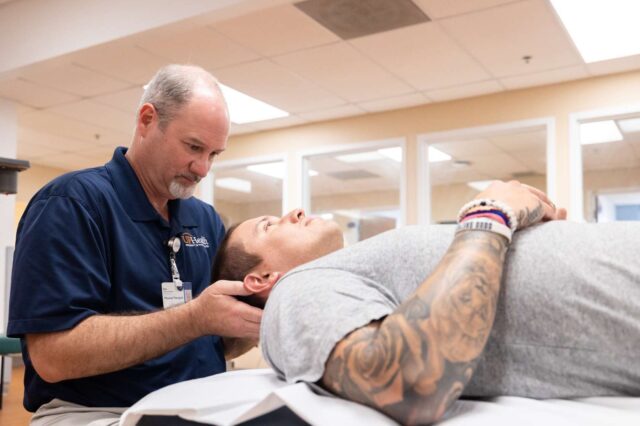Physical Therapy Can Help Headaches
A headache is any type of pain or discomfort that occurs in the face or head due to irritation of pain nerves. Current estimates show that approximately half of all people will experience a headache disorder sometime in their lifetime.

What is a headache and how is its pain created?
A headache is any type of pain or discomfort that occurs in the face or head due to irritation of pain nerves. Current estimates show that approximately half of all people will experience a headache disorder sometime in their lifetime.1
Pain nerves can be irritated in three primary ways: mechanical, chemical, and extreme temperature effects. Mechanical pain occurs when a nerve in the body is pinched or pulled, such as the pain that comes from having a splinter. When a splinter enters the body, it applies pressure to the surrounding pain nerves which causes pain until the splinter is removed. There is no medication that will remove the splinter, because only a mechanical treatment will resolve a mechanical source of pain.
Pain from chemical sources, such as inflammation and infection, are best treated with medications. Pain caused by extreme temperature effects, such as burns or frostbite, require more diverse methods of management that include both medication and mechanical treatments.
The most common headaches are tension-type headaches, which are headaches produced from mechanical issues in the neck and/or upper back.1,2 These headaches respond well to physical therapy treatments.
Migraine headaches are the second most common headache, but occur about half as often as tension headaches.1 Migraine headaches are produced from non-mechanical sources of pain.
There is another common mechanical headache from the neck and upper back that almost exactly mimics migraine symptoms. These mechanical headaches are called cervicogenic headaches, and they so closely resemble migraine headaches it is often difficult to determine which headache a person is suffering from without a movement-based assessment performed in physical therapy.2
How can physical therapy help with headaches?
Physical therapy can help people with recurrent headaches in two principal ways. The first is by helping to determine the source of the headache pain. Physical therapists are experts in mechanical assessment. If the source of a headache is not mechanical, physical therapy coordinates these findings with a patient’s physician, so they can evaluate other potential sources for better management.
The second way physical therapy can help people with recurrent mechanical headaches is by developing a treatment plan to improve these headaches. Physical therapy treatment focuses on teaching a headache sufferer which postures and activities in life are contributing to the movement issues causing their headaches, and which therapeutic movements are needed to resolve and prevent these movement issues from returning.
What types of movements are used for headaches?
The movements performed in physical therapy for headache examination and treatment are gentle range of motion movements that are no more stressful than the motions a person typically performs with their daily activities.
Determining if a headache is coming from a mechanical source can often be determined on the first physical therapy visit, but confirmation of a mechanical headache usually takes three to five visits.
If you experience recurring headaches and are curious if physical therapy can help, please contact your headache care provider and ask if a referral to physical therapy is right for you.
For more information about rehabilitation services at UF Health Jacksonville visit UFHealthJax.org/rehab.
References:
- Stovner et al. The global prevalence of headache: an update, with analysis of the influences of methodological factors on prevalence estimates. The Journal of Headache and Pain (2022) 23:34. https://doi.org/10.1186/s10194-022-01402-2.
- Headache Classification Committee of the International Headache Society (IHS). The International Classification of Headache Disorders, 3rd edition. Cephalalgia 2018, Vol. 38(1) 1–211. https://www.ichd-3.org/wp-content/uploads/2018/01/The-International-Classification-of-Headache-Disorders-3rd-Edition-2018.pdf.